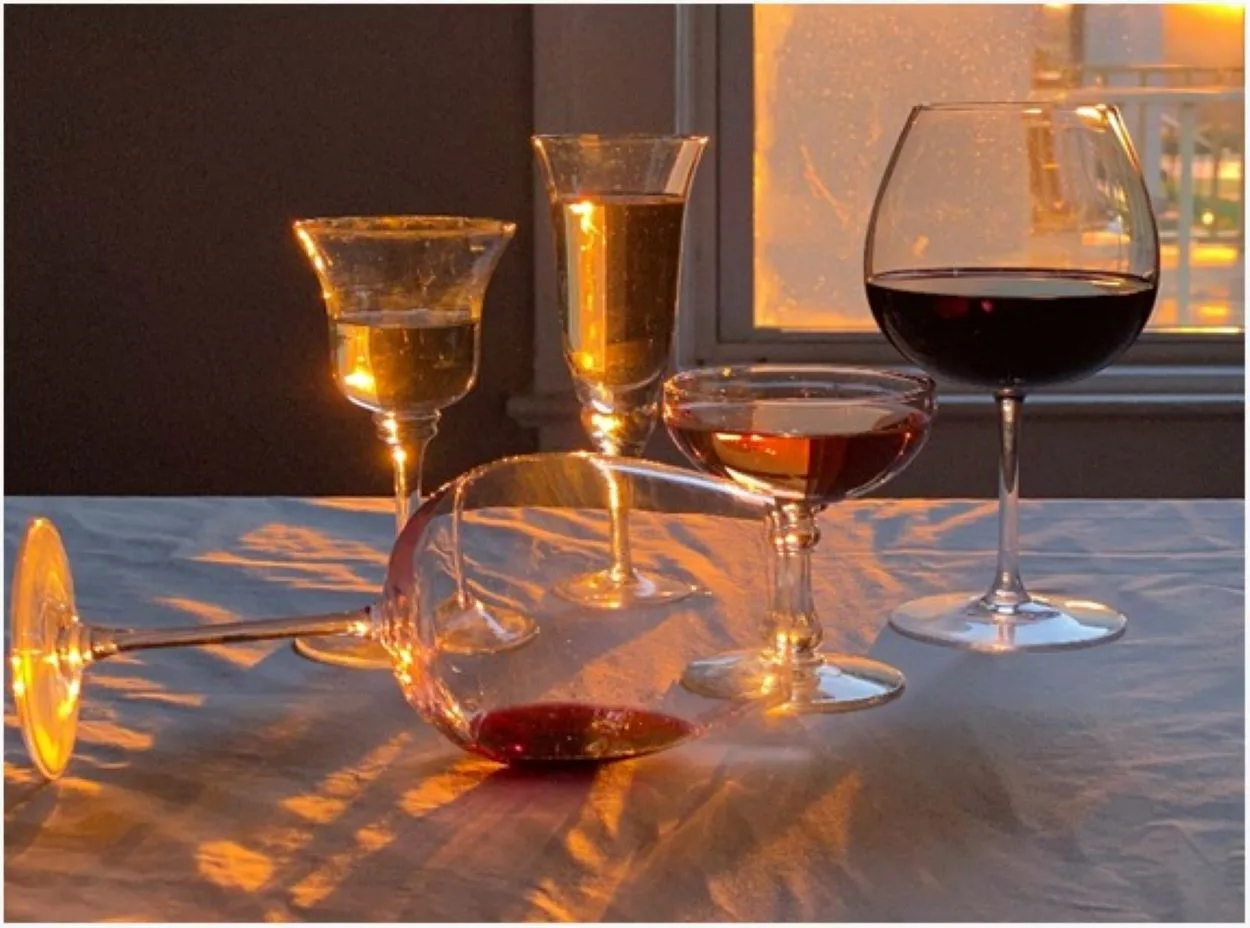Consuming dark or clear liquor implies that you are having an ethanol-containing beverage. It is usually assumed that clear booze is healthier than darker ones. People often believe that if they’re drinking light-colored liquor, it will not have adverse effects on their health.
Yes, It is true to some extent. Darker alcohol would have more side effects as compared to clear liquor. Due to the presence of some chemical compounds like acetaldehyde and mannitol, darker liquors would more likely cause headaches and hangovers. However, any alcoholic beverage, regardless of color, would be harmful if taken in excess.
There are several variations between dark and clear liquor. Dark liquor is kept in wooden barrels for fermentation. This process produces chemicals known as congeners, which lend a darker shade, whereas light-colored liquor is filtered and contains less congeners. This is the reason why you feel more intoxicated after consuming dark alcohol.
Let’s investigate the differences more deeply.
Why is Dark Liquor Dark?
Originally, distilled liquor is clear, taking a darker shade when matured. When liquor is kept in different types of wooden jars for longer, it starts turning dark. This is due to the fermentation process, which releases certain chemicals.
Moreover, liquor absorbs color and flavor from the container as well. The aging cycle of a liquor ranges from several months to years.
That is why the retail cost of matured alcohol is extremely high since containers occupy a ton of space in the distribution centers. The containers are recycled deliberately to add brown shade and flavor to the drink.
The addition of caramel shading and flavor further enhances the darker tint. Examples of dark liquor are Whisky, Scotch, Brandy, and Cognac.
Why Clear Liquor Is Clean And Clear?
We define pure crystal-clear liquor as an alcoholic beverage without impurities. High-quality liquors undergo a filtration process to remove any impurities present in them. Because impurities change the liquor’s taste due to certain chemical reactions, high-quality clear liquor has little flavor.
The clear liquor can be used as a base for cocktails because it is not matured. The production of clear liquor is cheaper than dark liquor, so it costs you less. Vodka, Rum, Gin, Sake, and Soju belong to the clear liquor class.

Dark Liquor Vs. Clear Liquor: Interesting Facts
There are several distinguishing factors both liquors have. These beverages usually differ in the alcohol contents, tastes, color, production process, storage, etc.
Degree of purity of the beverage
The degree of purity is a basic difference between the two beverages. Chemical compounds like congeners are created during the fermentation process, enhancing the color and flavor of the liquor. Although all alcoholic beverages contain a significant concentration of congeners, dark liquor contains far more than clear liquor.
Congeners are the by-products of the fermentation and distillation process. Their amount of liquor may differ. However, alcohols that are more refined will generally contain less amount of congeners.
However, color is not only a distinctive point between clear and dark liquor. Besides, there are other differences, too.
Read on to obtain a thorough understanding of them and how they can affect your body in different ways.
Dark vs. Clear Liquor: Which One Gives You Less Headache?
Have you ever had a terrible headache after consuming a lot of black liquor at a party? Isn’t it because there are large amounts of congeners in it? It is.
Congeners are bound to cause hangovers or may increase the severity of your headache. Clear liquor is better In this respect, as it is more refined and contains fewer chemicals. Therefore, fewer chances of causing hangovers.
Yet, excessive consumption of liquor of any shade can cause you to feel terrible the following morning.
Presence of Toxins in Dark and Clear Liquor
Congeners, for example, methanol and acetaldehyde, are more harmful. The breakdown of ethanol forms a by-product called acetaldehyde, while the methanol separates into formaldehyde and formic acid.
Since dark-colored alcohol like cognac, red wine, brandy, and whisky contains a high concentration of congeners, they affect health more than light and clear alcohol.

Irritation In The Stomach Lining
Excessive consumption of alcohol can induce stomach lining irritation and inflammation. It’s a medical disorder in which a part of the body turns red, swells, and causes much pain. Ulcers arise because of increased inflammation. The usage of alcohol impairs the body’s ability to heal ulcers.
Clear liquor can cause less irritation than black liquor. Surprisingly, there are some congeners found in alcohol, like butanol, that give a shielding effect to the stomach lining. Although it acts as a protective element, this doesn’t mean that a person should start drinking too much alcohol.
Amount of Antioxidant
Another remarkable distinction between black and clear liquor is that dark liquor contains antioxidants that benefit one’s health. They can lower the production of free radicals and chain reactions, which can injure the cells of living creatures. Heart disease, cancer, and other disorders are all caused by free radicals. The dark color of the liquor contributes to the presence of more antioxidants.
Amount of Allergens
The response of alcohol to human health can vary from person to person. It is difficult to predict it with certainty. Allergens trigger allergic reactions. Clear liquor contains less amount of allergens. Therefore, the consumption of light liquor is favorable in this case. This point makes it unique from black liquor.
Effects Of Alcohol Consumption In The Short And Long Run
Alcohol consumption has immediate and long-term consequences, leading to acute and chronic diseases. It also depends on the intake amount, type, and pattern of drinking it.
Let’s talk about it from a medical perspective. It is quite popular among youngsters. Liquor has a wide range of physiological consequences. Some are temporary, while others develop and persist over time, leading to significant physical and mental damage and lowering the quality of life.
Your gender, age, drinking status, and metabolic system all affect how much an alcoholic beverage can badly affect your body. However, moderate consumption of alcohol is considered safe for your body.
Immediate Consequences
The following are immediate consequences of consuming excessive alcohol in a single shot.
- Interpersonal clashes occurring after drinking may lead to accidents.
- Alcohol poisoning can cause a change in the behavior of a person, like he or she may become violent.
- Sleepy mind and severe headaches are other effects.
Long-Term Consequences
Below are researched long-term consequences of consuming excessive alcohol
- A person can commit suicide and crime.
- It can cause serious accidents.
- A person can become overweight.
- It poses a threat to unborn children.
- It can cause liver disorders.
- It may lead to anxiety, taking a person to antidepressants.
Dark Or Clear Liquor: WHO Report
World Health Organization reports on the consequences of consuming alcoholic beverages.
- According to the World Health Organization, every year, around 3 million people give up their valuable lives due to unhealthy usage of alcohol.
- Over 200 diseases and injuries have been linked to the inappropriate use of alcohol.
- Alcohol intake at an early age is a major cause of death and disability in the young generation.
Liquor consumption has not only affected the health of people. But beyond these outcomes, it also carries critical social and monetary misfortunes to society.
Is Clear Alcohol A Better Choice Than Dark Alcohol?
Light liquor can not be considered as an alternative to dark one. Both contain calories, and a significant amount of these calories can cause obesity issues.
According to National Health Services, 1 gram of alcohol contains about 7 calories. However, strong liquors, having a higher percentage of alcohol by volume, often have more calories.
The color of a drink is not responsible for developing several disorders. More important risk factors for developing these disorders include the frequency with which booze is consumed, the volume consumed, and the concentration of alcohol swallowed.
To reduce health disorders caused by alcohol, you can take coffee and tea, eat healthy foods, intake proper vitamins, and reduce calories.

Some Alternatives To Liquor Consumption
- You can enjoy black tea as the best alternative to alcohol. It lowers blood sugar levels and reduces the risk of diabetes, heart disease, hangover, obesity, etc.
- Kombucha, healthy juices, wine, gin, beer, and alcohol-free cocktails are also healthier than strong dark and clear alcoholic beverages.
Final Verdict
Dark and clear liquors both contain ethanol, but they have significant differences.
- Dark Liquor, such as Whisky and Brandy, undergoes an aging process in wooden barrels.
- The aging process increases the presence of congeners. It contributes to its rich hue and complex taste.
- Additionally, manufacturers often enhance the liquor’s color with food additives. It makes dark liquor more expensive than clear varieties.
- Notable examples of dark-colored liquor include Whisky, Scotch, Brandy, and Cognac.
- Like Vodka and Gin, clear Liquor undergoes filtration, resulting in fewer congeners. This characteristic makes it less likely to cause headaches and hangovers.
- Excessive consumption of both types of Liquor can have adverse health effects.
- Dark Liquor contains more antioxidants but also more harmful congeners.
- The presence of allergens and toxins varies between dark and clear Liquor. Generally, clear Liquor has fewer allergens.
- Excessive alcohol consumption can lead to immediate health consequences, regardless of type. An accident is one of the major risks.
- It can also result in long-term health issues. Among these, liver disorders and mental health problems have a high chance.
- Moderation in alcohol consumption is essential for minimizing health risks.
- Considering healthier alternatives like tea, kombucha, and alcohol-free cocktails can be beneficial.
Other Articles
- What Is The Difference Between Schwag And Swag? (Answered)
- What Is The Difference Between ENTJ And INTJ On The Myers-Brigg Test? (Identified)
- Cracking The Difference Between “Fall On The Ground” And “Fall To The Ground”
- What’s The Difference Between Geminis Born In May And June? (Identified)
- What Is The Difference Between “De Nada” And “No Problema” In Spanish? (Searched)

